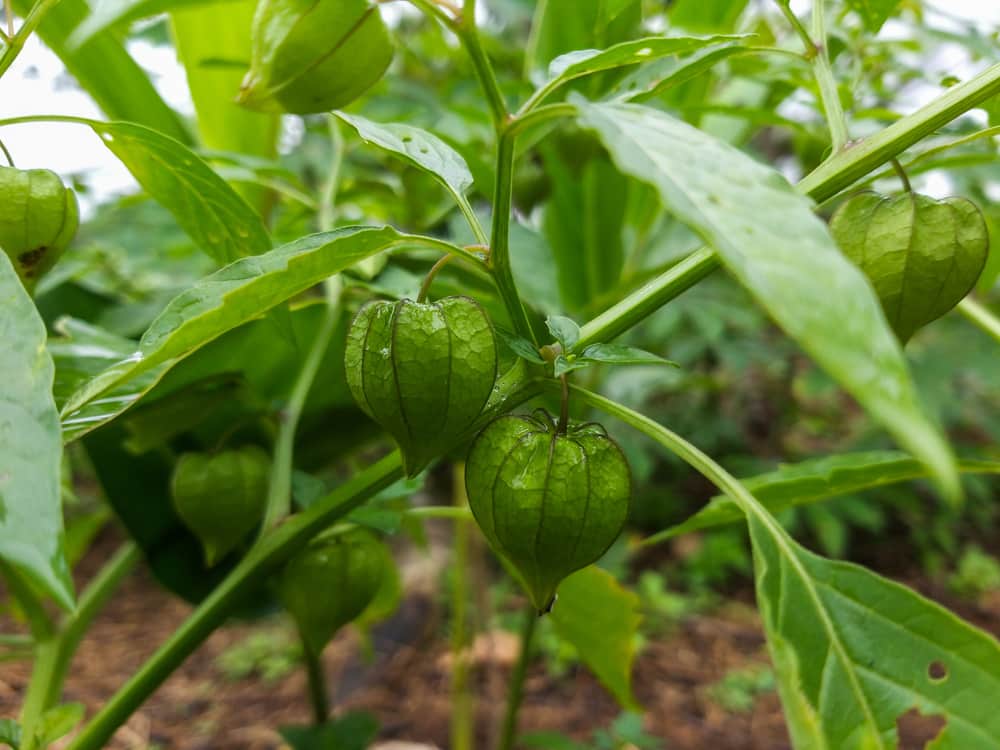
Tomatillos or also sometimes known as Mexican husk tomatoes are a type of fruit that fall under the nightshade family. These are grown as annual plants which is why you can harvest them throughout the bloom time. Though once the season is over, your plant will die out and a new one has to be planted the next year. One of the best things about tomatillos is that you can either eat them as it is or make several dishes from Mexican cuisine that use the ingredient as its base.
The plant is native to Mexico and Central America, but it can also be found in several other regions. With that being said, you should note that there are also some issues that you can run into with the fruit. A common problem that is often reported is tomatillo leaves turning yellow. If you are getting the same issue, then you might be a little worried. This is why we will be using this article to provide you with a list of reasons why it can happen as well as ways that can be used to fix it.
Why Tomatillo Leaves Are Turning Yellow?
- Overwatering Your Tomatillos
When it comes to keeping your fruit maintained, several things should be kept in mind. Watering the plant is not usually required but doing so can help in keeping the fruit healthy. Though, a common issue that tons of people run into is overwatering the plant. This causes the leaves on it to turn yellowish which indicates that your fruit is dying.
The main reason for this is that all the excess water that you had put on your plant starts to gather around the soil. This traps the roots and starts suffocating them which causes the leaves to change their color. If you are already getting this issue, then try leaving your plant as it is for a few days without adding any more water.
Alternatively, you can take it out and place it someplace sunlight comes in contact with the plant properly. This should allow the extra liquid to evaporate so that your problem can be fixed. While this is enough to get rid of the issue, you should note that the fix is only temporary.
This is why a better option is that you create a drainage system inside your soil. The process allows all the extra water to escape the soil surrounding your plants so that they can be kept healthy. Only enough water to keep the soil around your tomatillos moist is required which is why you should keep this in mind.
- Lack Of Nutrients
Another common issue that can cause the leaves on your tomatillo plants to turn yellow can be that it is not getting enough nutrients. The deficiency of nitrogen or magnesium is one of the most common reasons for small yellow spots to form on the leaves.
With time these start to spread all around the part until it starts dying. This can be quite dangerous which is why taking proper precautions beforehand is important. As soon as you notice the yellow spots forming, you should start adding fertilizers to your soil. These should be rich in both magnesium as well as nitrogen so that your fruits can be kept healthy.
There are tons of brands that manufacture fertilizers which is why you must select a reliable brand. If you are having trouble with this step, then try asking the store clerk for recommendations. They should help you out in picking a fertilizer that works best with your tomatillo plants.
- Psyllid Yellows
Finally, one more reason why your tomatillo leaves might be turning yellow can be that they have been infected with psyllid yellows. These are small insects that feed on the juice of your plant. While you will only notice the color on your leaves starting to change at first. If left untreated, the infestation spreads all around the plant, causing it to die within a few days.
This is why people should always closely observe the plant to notice any problems with it. Insects like these can only be killed by using strong chemicals mixed with fertilizers. Though, another solution that you can go with is keeping a companion plant that can repel all the insects instead.
